Key Points
- On the afternoon of April 8, a total solar eclipse will be visible across a large portion of Mexico, the US and Canada.
- If you’re lucky enough to be flying, it may be a once-in-a-career type thing. The next one won’t happen in the US again until 2044.
- There will be some impact on flight ops too. The FAA has published a list of airports on either side of the eclipse track, along with guidance on what flights in the area should expect on the day – check it here.
What’s so special about this one?
It is ‘total’ – in other words, the moon will pass directly between the sun and earth completely blocking the face of the sun. The sky will darken as though it were night (or very close to it). The sun’s outer atmosphere will become visible as a halo.
This ‘path of totality’ as it were, will begin over the South Pacific before hitting Mexico’s Pacific Coast at around 11:07 PDT.
From there it will enter the US over Texas, and travel across Oklahoma, Arkansas, Missouri, Illinois, Kentucky, Indiana, Ohio, Pennsylvania, New York, Vermont, New Hampshire and Maine.
Across the border it will then be visible in Canada over Southern Ontario, Quebec, New Brunswick, Prince Edward Island and Cape Breton.
The show will end east of Newfoundland at 17:16 NDT.
In each instance complete totality will last for approximately 4 minutes. However, depending on your direction of flight, this may be longer in the air.
Here are the exact timings NASA has published for each region:
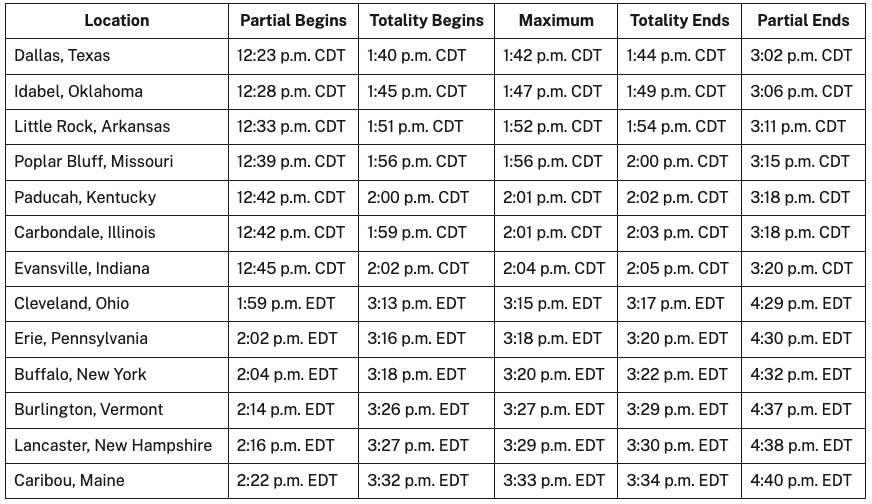
Don’t stare at the big shiny light!
It may go without saying, but be careful of your eyes. If the sun is anything but completely obscured, peering at it through a camera, telescope or your eyes will fry your corneas without appropriate protection. This will cause problems when it comes time to land again.
Your trusty Ray Bans won’t do it either – NASA says that sunglasses aren’t enough. You’ll either need to source yourself some funky eclipse glasses (which are thousands of times darker), a handheld solar viewer or use an ‘indirect’ viewing method.
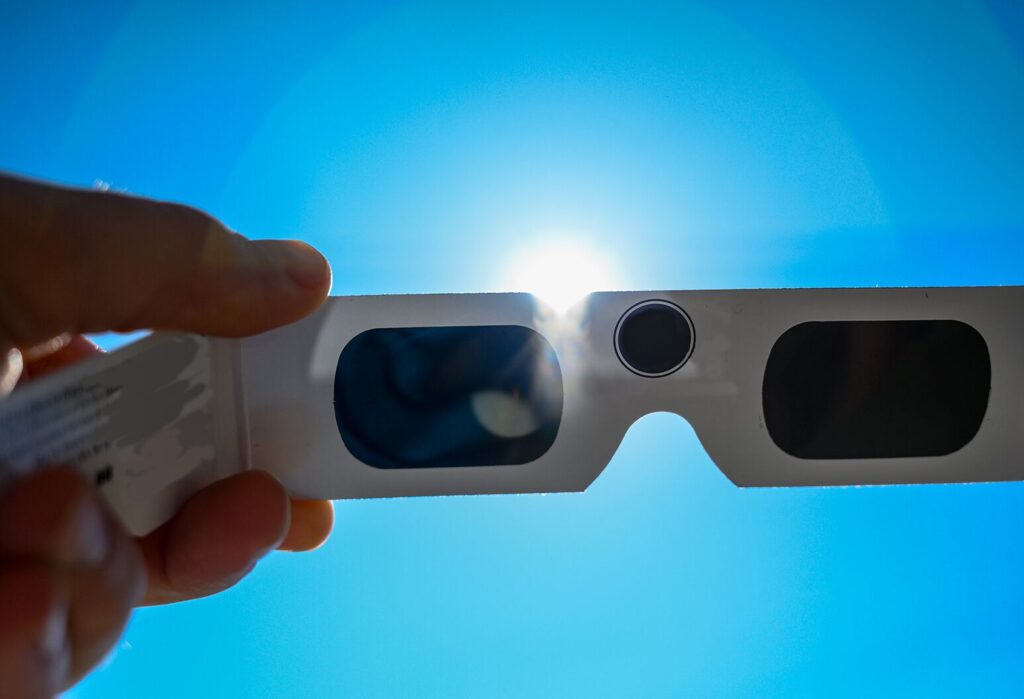
If you’re flying in the afternoon on April 8, pick yourself up a pair of these bad boys for your flight bag.
Sidenote – don’t stare at it through a hole in a piece of cardboard either. No idea why, but this is what springs to mind to many. You’ll simply blind yourself through a very small hole. NASA have said no-bueno to that idea too.
Busy GA Traffic
Aside from a great view, an influx of traffic to GA-friendly airports is expected along the eclipse’s path. It’s a relatively narrow band of the most premium viewing (130nm wide) and so people will be travelling far and wide to get a good view.
As such, expect ATC-related delays and parking restrictions at larger airports along its path. It’d be worth checking ahead with your handling agent to ensure there will be no impact to your operation.
The FAA has published a list of airports on either side of the eclipse track – check it here.
If you’re headed into un-towered fields in something fast and fancy be aware you are likely to encounter more traffic than usual. Some of it will be transient and potentially not as proficient at being seen and heard as commercial operators are.
Gram Famous
Chances are you’ll want to take a picture of the eclipse with your smart phone. Here is a handy article with some tips to how to set up your camera and get the best results.
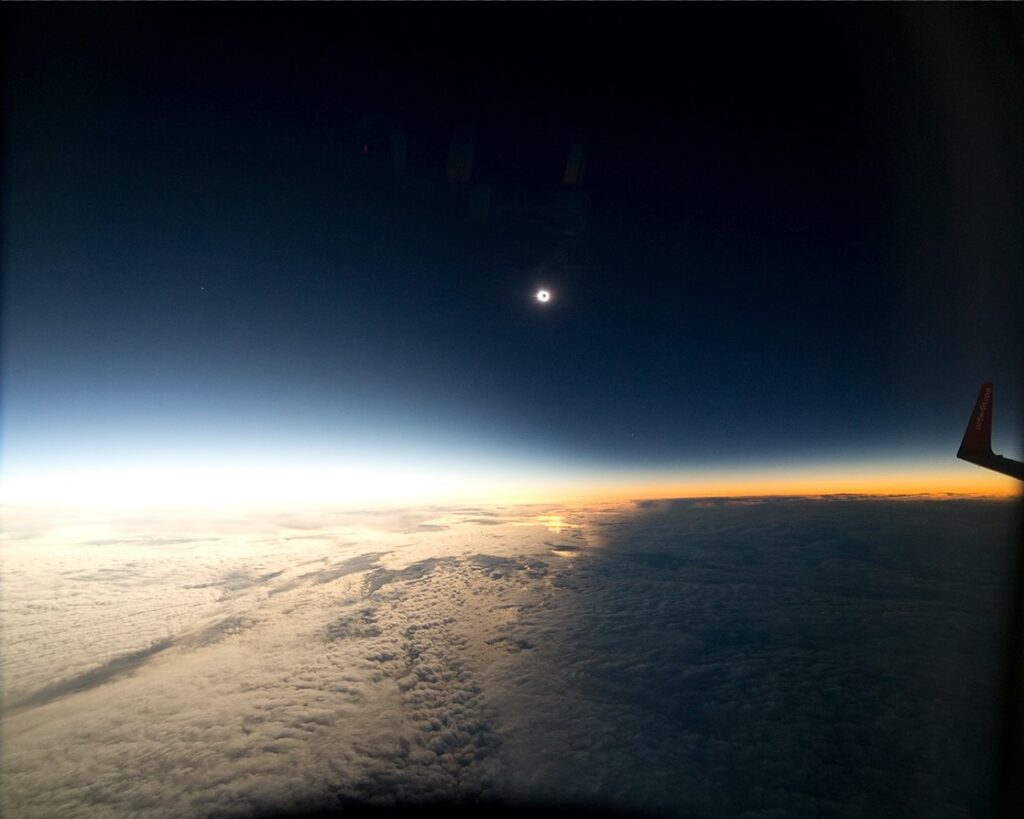 Better yet, share them with us on team@ops.group. We’d love to see them and show the rest of the group.
Better yet, share them with us on team@ops.group. We’d love to see them and show the rest of the group.
More Info
NASA has everything else you need to know about the eclipse on their website here.
More reading:
- Latest: Teterboro: RIP the RUUDY SIX
- Latest: 400% increase in GPS Spoofing; Workgroup established
- Latest: GPS Spoofing WorkGroup 2024
- Safe Airspace: Risk Database
- Weekly Ops Bulletin: Subscribe
- Membership plans: Why join OPSGROUP?



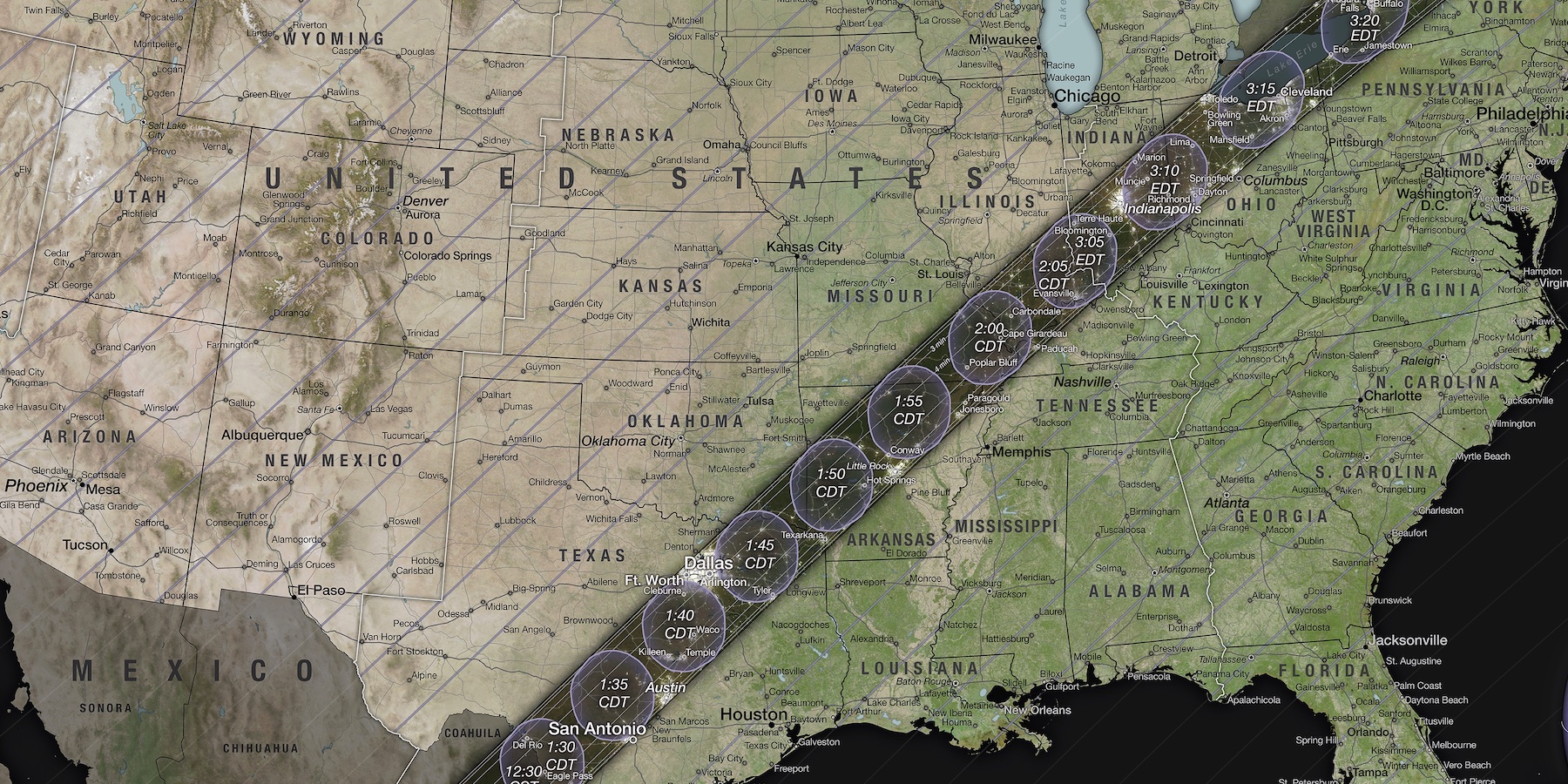
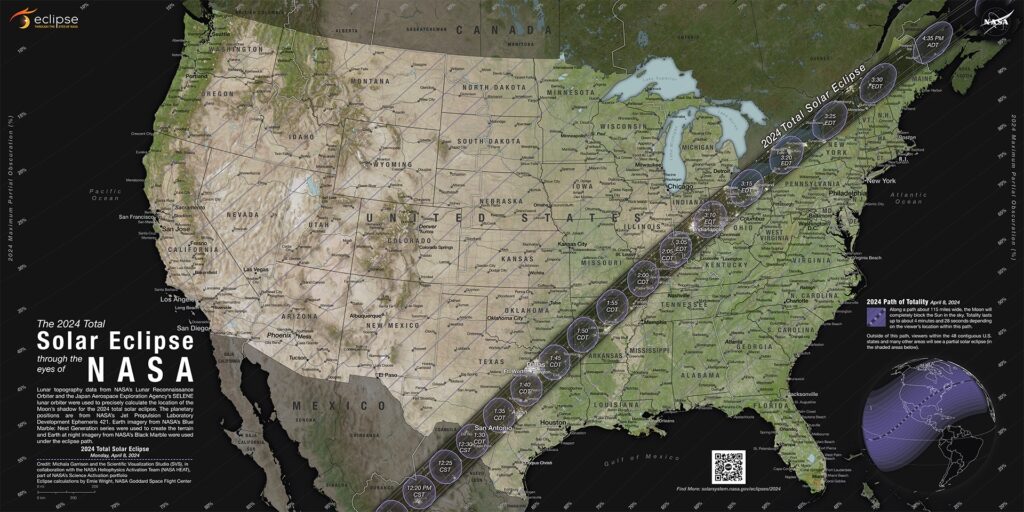







 Get the famous weekly
Get the famous weekly 





